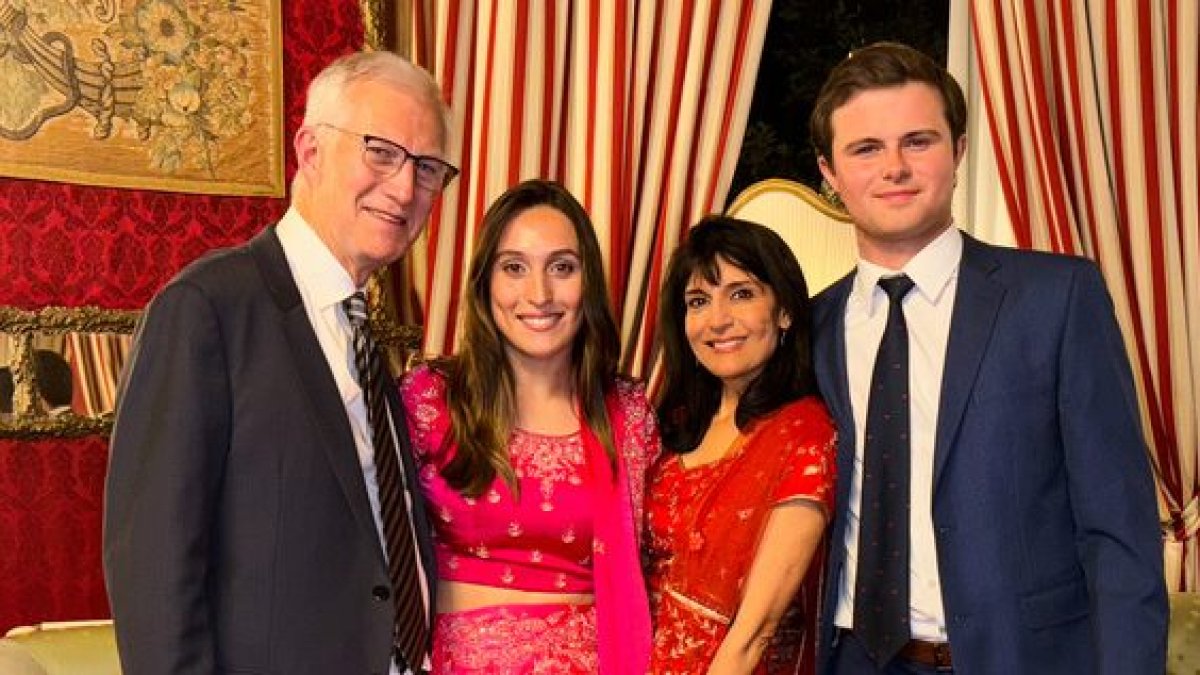Mikheil Kavelashvili, an ally of Georgia’s authoritarian ruling party, has been sworn in as president of the Caucasus country, sparking more protests in the capital Tbilisi.
Kavelashvili’s inauguration marks the final step in what critics have described as a state capture by pro-Russian oligarch Bidzina Ivanishvili, whose Georgian Dream party has brought all the country’s institutions under its control since coming to power in 2012. The sole candidate for the role was elected this month by a college of 300 members, mostly GD members or sympathisers.
Protesters took to the streets with red cards — a symbol of their opposition to the former footballer, a striker for Manchester City and several Swiss clubs, turned ultranationalist firebrand.
Demonstrators, who have held daily rallies for the past month as the country’s political crisis escalated, welcomed a move by the US state department to impose sanctions on Ivanishvili. He was hit by the measures, which were announced on Friday, for “undermining the democratic and Euro-Atlantic future of Georgia for the benefit of the Russian Federation”.
Leaving the Orbeliani Palace, the presidential seat, on Sunday, Salome Zourabichvili, the country’s outgoing president and de facto opposition leader, said she remained the rightful holder of the role.
In a speech to Georgians gathered in front of the palace, she denounced Kavelashvili’s inauguration as a “parody” and affirmed her loyalty to “the country and the people . . . I will leave here with you and remain with you.”
Zourabichvili had been uncertain whether to barricade herself in the palace or leave it, several people familiar with the matter told the Financial Times. She had also said she would not step down until new elections were held, arguing that the college, dominated by ruling party members, did not have the legitimacy to elect Kavelashvili as president.
She has also demanded new elections. The European parliament said October’s vote was “neither free nor fair”.
Georgia has experienced a year of political upheaval. On December 14 last year, people took to the streets of Tbilisi and other cities to celebrate the country obtaining EU candidate status, a long-held dream for many in the small Caucasus nation of 3.8mn.
But the authoritarian slide accelerated in May when parliament adopted a foreign agents law, dubbed the “Russian law” for its parallels with Moscow’s methods of suppressing dissent, despite months of protests.
Non-governmental organisations warned it was a tool to dismantle civil society, mirroring Russia’s practice of using the “foreign agent” label as a precursor to prosecution. Unlike in Russia, organisations in Georgia must self-register, but most NGOs have refused in protest.
The next flashpoint came in October’s parliamentary elections when Georgian Dream claimed 54 per cent of the vote. There were widespread violations on election day, including ballot stuffing, stolen IDs and “carousel voting”, in which the same people voted at multiple polling stations, according to multiple observers. Opposition parties rejected the results, boycotted parliament and demanded new elections.
Irakli Kobakhidze, the GD-backed prime minister, in late November announced that Georgia was suspending EU accession talks, pledging to revisit the issue in 2028 so the country could join “with dignity”.
Protests increased in intensity and were met with an unprecedented police crackdown, with dozens hospitalised and hundreds detained.
“Cracks in the system appeared as people turned on Georgian Dream, seeing their neighbours and family beaten — this was the final straw,” said Tamar Chergoleishvili, an opposition politician and former media manager.
Elene Khoshtaria, leader of Droa! (It’s Time!), part of the liberal coalition that came second in the parliamentary elections according to the official results, called the opposition “a national resistance movement”.
“It’s not about which party you like. It’s about whether you and your children can continue to live in this country in a more or less peaceful way,” she said.
For some opposition politicians, the country’s descent into authoritarianism was no surprise.
“For over 10 years I have been saying that Ivanishvili’s trajectory is towards [Ukraine’s former pro-Russian president Viktor] Yanukovich,” said Giga Bokeria, a former national security adviser. “I might be surprised by the speed and certain forms of the turn, but not the turn itself.”
Kornely Kakachia, director of the Georgian Institute of Politics in Tbilisi, said the ruling party was taking a gamble by increasing its oppression of civil society.
“The more they oppress people, the more they go out,” he said. “Georgians will not tolerate this. Too many people [have] got fed up with Ivanishvili.”

























